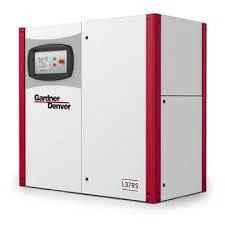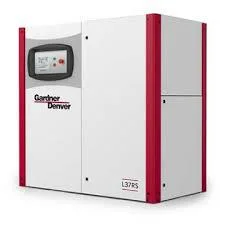Many of my customers ask “WHY DO I NEED A SUCTION STRAINER FOR OUR NEW PUMP?”
For all new VIKING PUMP positive displacement pump package and CRANE centrifugal pump package proposals we submit – there will be a separate line item for a recommended suction strainer.
Below are the primary reasons:
VIKING internal gear PD pumps have tight strict internal clearances and if the inlet fluid could contain a high particulate concentration from pipe debris or fluid hardening that may cause restriction in pump clearances specified causing excessive heat and potential cavitation that could cause short pump life and the downtime to inspect and repair pump may be cost prohibitive to your production requirement. A suction strainer is a relatively inexpensive item compared to cost of new or repaired pump and should be considered as an insurance investment. Centrifugal pumps that have enclosed trimmed impellers can also see blockage with potential same outcome from cavitation or short pump life from heat bearing failure. An inlet suction basket strainer or Y-strainer can be supplied with several filter mesh liners for specific size particulate seen. If your fluid has high particulate due to fluid composition then a no mesh basket can be supplied with approximate 3/16” perforated basket. Look at your cost of lost production time or pump repair time and you will see the minimal cost of a suction strainer is justified.
Many fluids may be harmed from pipe scale seen on inlet of pump or from the pump bushings or other internal pump parts that contain carbon or iron. Again, an inlet pump strainer will protect your fluid from these damaging materials.
VIKING PUMP has partnered with EATON STRAINERS for inlet simplex and duplex strainers with many different materials of construction and port configurations. See link for more information.
VIKING LIDEASE strainers is a proven simplex suction strainer supplied for many years has an easy opening cover is another option. See link for more information.
If your production process cannot allow downtime to clean or replace internal strainer baskets then the EATON duplex strainer is best recommended option.
If you consider your fluid a clean fluid and inlet piping not an issue then a suction strainer may not be needed.
 Drive method is probably the simplest method of differentiating compressors.
Drive method is probably the simplest method of differentiating compressors.The compressor, whether reciprocating or rotary, can be v-belt driven, direct coupled, or either of the above accompanied by a variable frequency drive. The simple v-belt drive is most commonly seen on the air cooled reciprocating compressor, and smaller rotary screw compressors. V-belt drives provide for versatility in selecting optimum speeds for the desired flow and pressure. Direct drive (coupled) compressors require that the air end be constructed to maximize the flow (CFM) for a given horsepower motor, or use internal gears to adjust the speed of the compressor to achieve this maximum flow.
Variable speed (frequency) drives adjust the speed for optimum flow and pressure by adjusting the frequency of the incoming power to the compressor.
The final method of compressor differentiation is by duty cycle. This determines the amount of time the compressor can safely run without shutting down for cooling.
Small air-cooled reciprocating air compressors generally are allowed to run 75% of the time and be idle for 25% of the time. This allows the components to cool between cycles. Rotary compressors and water cooled reciprocating compressors can run continuously 24/7, shutting down only for periodic maintenance.
Centrifugal compressors are also designed to run continuously 24/7.
Finally, cooling method be a determinant of compressor type. This is simple, as there are only two. Cooling can be either air-cooled or water-cooled. Rotary screw compressors, if air cooled, use a radiator-style cooler (heat exchanger) for both oil cooling and after-cooling. If water cooled, shell and tube type heat exchangers are typically used. Plate-fin coolers can also be used.
Air-cooled reciprocating air compressors will typically use a finned tube intercooler and the same for after-cooler. Some will use a radiator type for after cooler. Water cooled reciprocating compressors will typically use shell and tube heat exchangers for both intercooling and for the after-cooler.
Centrifugal compressors will generally be water cooled, and use shell and tube type coolers.
See the first article in this series here
See the second article in this series here
 Types of Compressors & Lubrication Methods
Types of Compressors & Lubrication MethodsCompressor types can also be defined by lubrication, i.e. whether lubricated or non-lubricated. Non-lubricated compressors are usually referred to as “oil free”. ISO 8573-1 Class Zero (2010) provides for a purity level that ensures no oil is in contact with the compressed air, and typically indicates no oil is used in the compressor, at all. “Oil-less” is another nomenclature used to indicate no oil used in the compressor. Oil free and oil-less are about as good as it gets when it comes to quality of compressed air. (There are treatments available to remove impurities that are ingested through the intake of the compressor, but the compressor does not add any impurities to the air stream.) Both reciprocating and rotary compressors use special materials (TeflonR piston rings or coating of rotors, for instance) and sealing media such as water sealing between rotors. Timing gears are also used to keep rotors separated.
Lubricated air compressors actually inject oil into the compression chamber to provide lubrication for the moving parts. Piston compressors will provide lubrication to the cylinder walls, rings, and running gear (rods, crank, bearings, etc.) by one of two methods. The first is “splash lubrication”. The piston rod will have a dipper affixed to the bottom which dips into the oil in the sump and splashes it up onto the running gear and pistons. This is the most common form. Pressure lubrication is an alternative to splash lubrication. This incorporates an oil pump which forces oil into the moving parts through drilled passages within the compressor. It will also incorporate an oil filter to remove contaminants from the recirculating oil.
Rotary compressors use differential pressure to circulate the oil throughout the lubrication system. The oil is pulled from the sump and processed through the oil cooler to reduce the inlet temperature of the oil before being injected into the compressor pump (air end). It then passes through the oil filter to remove impurities from the oil. It is then injected into the air end where it lubricates the bearings and gears (if any), seals between the rotors to prevent metal-to-metal contact, and keeps the temperature within an acceptable range. It is then delivered through an air-oil separator to remove the oil from the air stream and store it back in the sump. This process allows for some oil carryover into the air stream.
Centrifugal compressors are inherently oil free as no oil enters the compression chamber. Lubricated parts are separated from the compression chamber by air seals and oil seals, separated by an atmospheric vent area.
See our first article in this series here
“I want a quote on an air compressor”. This is how the conversation and subsequent negotiation begins. Our first response is “what size?” This refers not only to the CFM required, but also to the pressure required. Once these points are determined, the next question is “what type compressor?”
Compressor manufacturers offer many types of air compressors, each with pros and cons, depending on the customer’s application, specifications, and budget restraints. The compressors are broken down into various categories defined by: 1) compression method, 2) lubrication, 3) drive, 4) duty cycle, and 5) cooling method.
Compression method refers to the way the air is compressed. The earliest devised type is reciprocating or piston-type. This incorporates a piston sliding up and down within a cylinder compressing the air within the cylinder, and exhausting out the discharge valve. These reciprocating compressors can be air cooled or water cooled, single stage, or multiple stage, single acting or double acting. They can range from fractional horsepower up to several thousand horsepower.
The second type is rotary screw. This method uses helical screw rotors, male and female, in a continuous rotary motion, compressing the air within the housing. Most commonly, screw compressors are lubricated with oil flooding the rotors for sealing, cooling, and lubrication of the rotors, bearings, and gears (if used). The rotors are not timed by gears, but they are separated by a film of lubricating oil. These are used in heavier manufacturing where continuous duty is required. Rotary screw compressors are designed to run continuously 24/7 with shut down only for maintenance.
A third type of compression is by rotary vane. This method utilizes a series of vanes or blades arranged on a cylindrical rotor, rotating in an eccentric cylinder or housing. As the rotor rotates, the blades slide in and out of slots, allowing the volume between the vanes to be compressed. These units are also used in manufacturing facilities and are designed for continuous duty.
The fourth major classification by compression method is centrifugal. These compressors use an impeller with blades, curved to accentuate the air flow within a volute casing. They may be single or multiple stage depending on pressure requirement, and are typically oil-free. They are usually larger capacity and can be provided up to 10,000+ HP.
There are other compression methods available (diaphragm, rotary piston, etc.) but they are specialty/niche compressors.
More discussion on compressor types will follow in coming articles.


